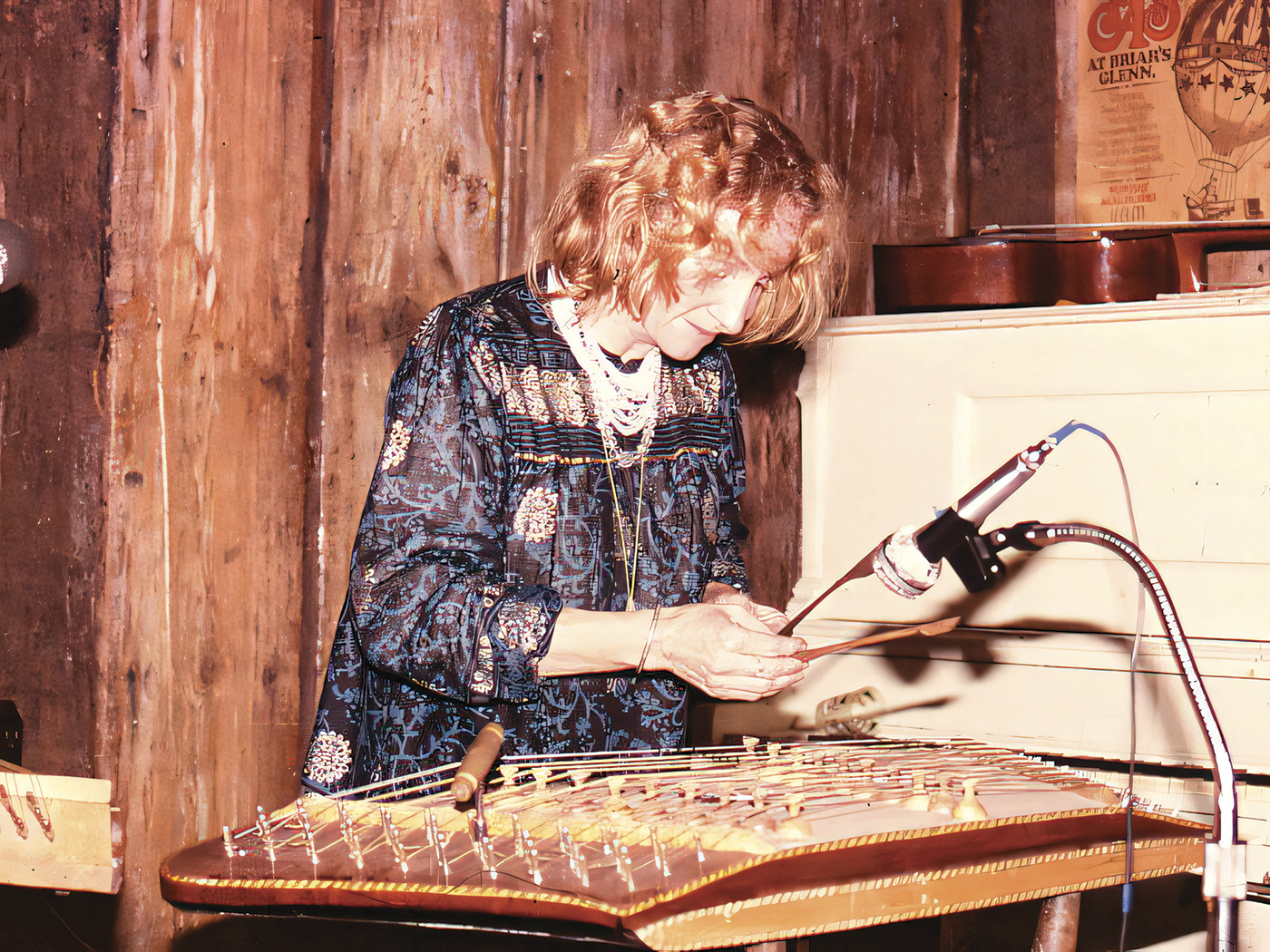That elderly lady in the loft, who had no shower or kitchen, who threw parties for the bohemian crowd, where she played strange, ringing, twanging instruments with a faraway look in her eyes? Around New Orleans they said she lived in a hippy commune before hippies existed, or worked her passage as a cabin girl on a Mississippi steamboat, or ran away to a monastery in Mexico with an anarchist priest. They said she had two kids, that she had studied in Europe and travelled all over the world; some said she was secretly involved in a famous pop group over there, though none knew which; others warned not to speak ill of her, lest she cause her hammers to bludgeon the dulcimer of your heart.
These things they said were pretty much true. For Dorothy Carter, whose life ended after 68 years with a stroke in 2003, lived a nomadic, chaotic, private life whose richness found its expression in music – a mesmerizing tapestry of medievalism, folk, songwriting and proto-new age ambient recalled by many who knew her as something transcendent and bewitching.
That’s certainly the impression gained by this masterful re-release of Carter’s 1976 private press LP Troubadour. Its cover artwork, reminiscent of an Edwardian fairytale illustration, drops you straight into a sepia-tinged sensibility. Carter is drawn on the front as a minstrel playing hammered dulcimer in a field outside a fortified citadel. On the reverse are blurry photos of Carter’s instrumentarium, an antique road show of psalteries, sitar, tambour, various dulcimers, flutes, harps and hand drums. The track list is a polyglot assemblage – tunes and songs from medieval France, England and Scotland, psalms, Irish and Israeli melodies, an Essene hymn, a Ukrainian carol, Appalachian folk songs. Although separated in space, their common thread is the rilling, liquid percussion of the dulcimer, a trapezoid-shaped zither native to most corners of civilization and imported to the US East Coast by early 19th century German immigrants. In Carter’s hands, the dulcimer acts as a magical portal which allows Eurasia’s ancient musical spirits to flow into the estuary of 1970s, post-counterculture America.
Carter was not the first of her generation for whom folk music was a tributary from the past. The antiquarian urge was strong in the likes of John Fahey, Robbie Basho and Sandy Bull in the US, and British counterparts John Renbourn, Maddy Prior and Tim Hart. In Carter’s hands, though, the past is composed not of dust but of quicksilver. Opener “Troubadour Song”, with its sprightly dulcimer and pulsing drum, could have come from a David Munrow early music album. Then come the flocking notes and keening flute of “The Cuckoo”; the twinkling lament of “Binnorie”, the glorious songs “Make A Joyful Sound” and “Shirt Of Lace”. The ghost harmonics of her “Troubadour Songs On The Psaltery”. The eerie sensation, in “Tree Of Life”, of time taking a breath in some sun-dappled courtyard in Samarkand.
What makes Carter so intriguing is that she was not just a bargain-hunter at folk music’s white elephant table, but had connections with a fledgling realm of experimental music, alternative tuning and sound art. This was forged after a chance (or cosmically predetermined) meeting with Robert Rutman in Mexico. Rutman, an artist who worked with steel cello and long string vibrations, was living in Mexico City with expatriates David Demby and his wife Constance, who would go on to make a successful career as a spacey new age composer. Rutman, Constance Demby and Carter sparked each other’s creativity for many years after, including in the avant-garde improv band Central Maine Power Company. Rutman later played on Carter’s album Waillee Waillee, which was re-released last year. Eric Demby, son of David and Constance, has contributed vivid notes to Drag City’s Troubadour reissue, providing first-person testimony to Carter’s bewitching presence and her role as a musical vessel rather than a composer.
Demby confirms that Dorothy Carter crossed paths with Laraaji while busking on the streets around Washington Square Park in New York during the ’70s. It makes sense that she was a part of this impermanent network of troubadours, searching for meaning through otherworldly tones, who did not feel a strong pull to monetise their music in the conventional way. The eclecticism and precariousness of her life story also parallels that of Harry Smith, who believed that the collecting and passing-on of songs and folklore put humans in touch with potent ur-civilisational forces for change.
Carter had studied music at Bard College and the Royal Academy of Music in London, but her career path was wayward and pot-holed. Troubadour emerged from the ‘back to the land’ communities of Maine and New England where she ended up in the mid-’70s, living in a hut teetering on wooden stilts. By the mid-’90s she fetched up in Berlin, where she made the acquaintance of Alex Hacke from Einstürzende Neubauten, and contributed a cobweb-light dulcimer solo to the ambient techno track “Things You Like To Hear” by Sun Electric. She is credited as a co-founder of The Medieval Baebes and can be heard on their late-’90s albums Salva Nos and Worldes Blysse. Despite these fascinating side trips, Troubadour makes it clear that Dorothy Carter didn’t view music as bread and butter, but as an eternal stream from which communities could be refreshed.
AAA

